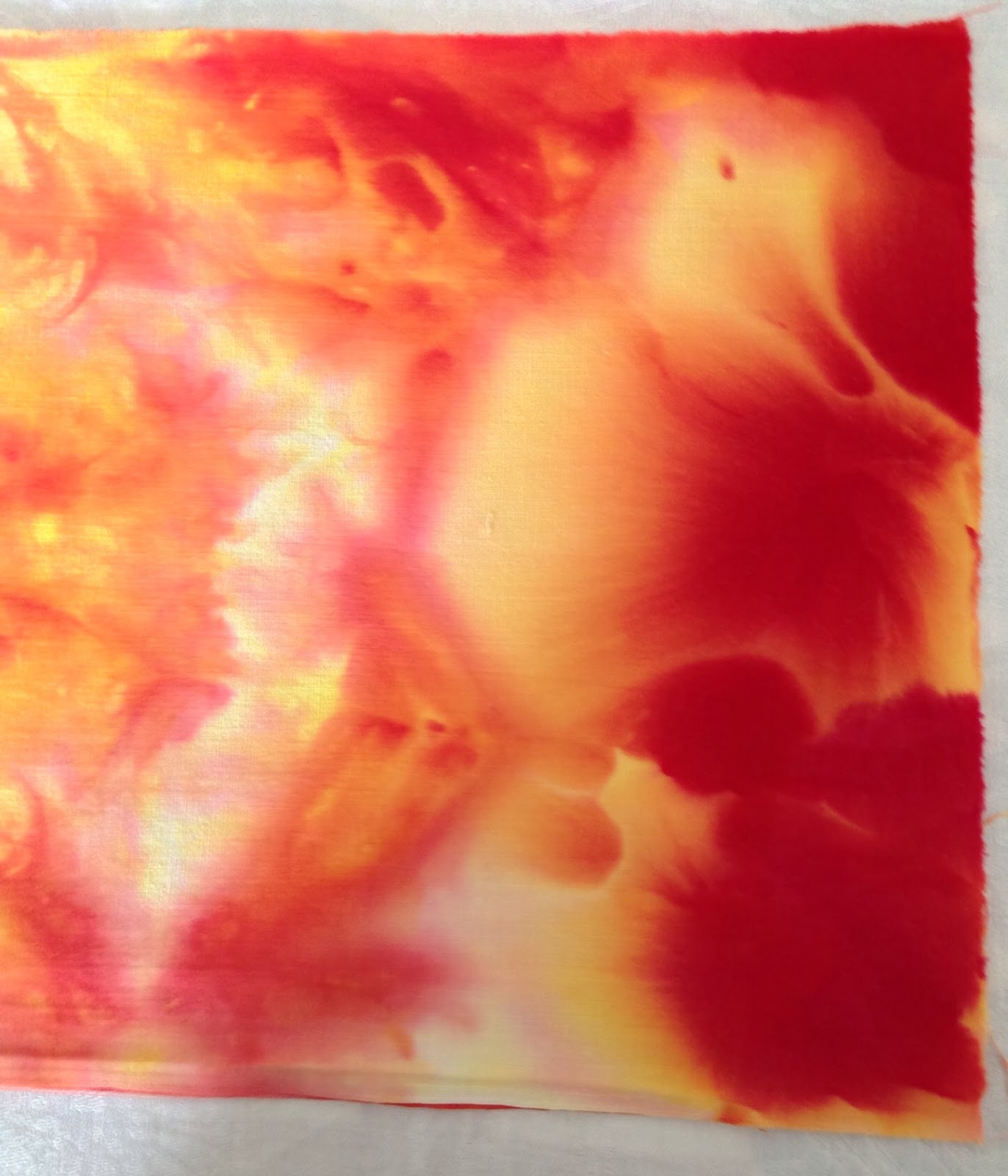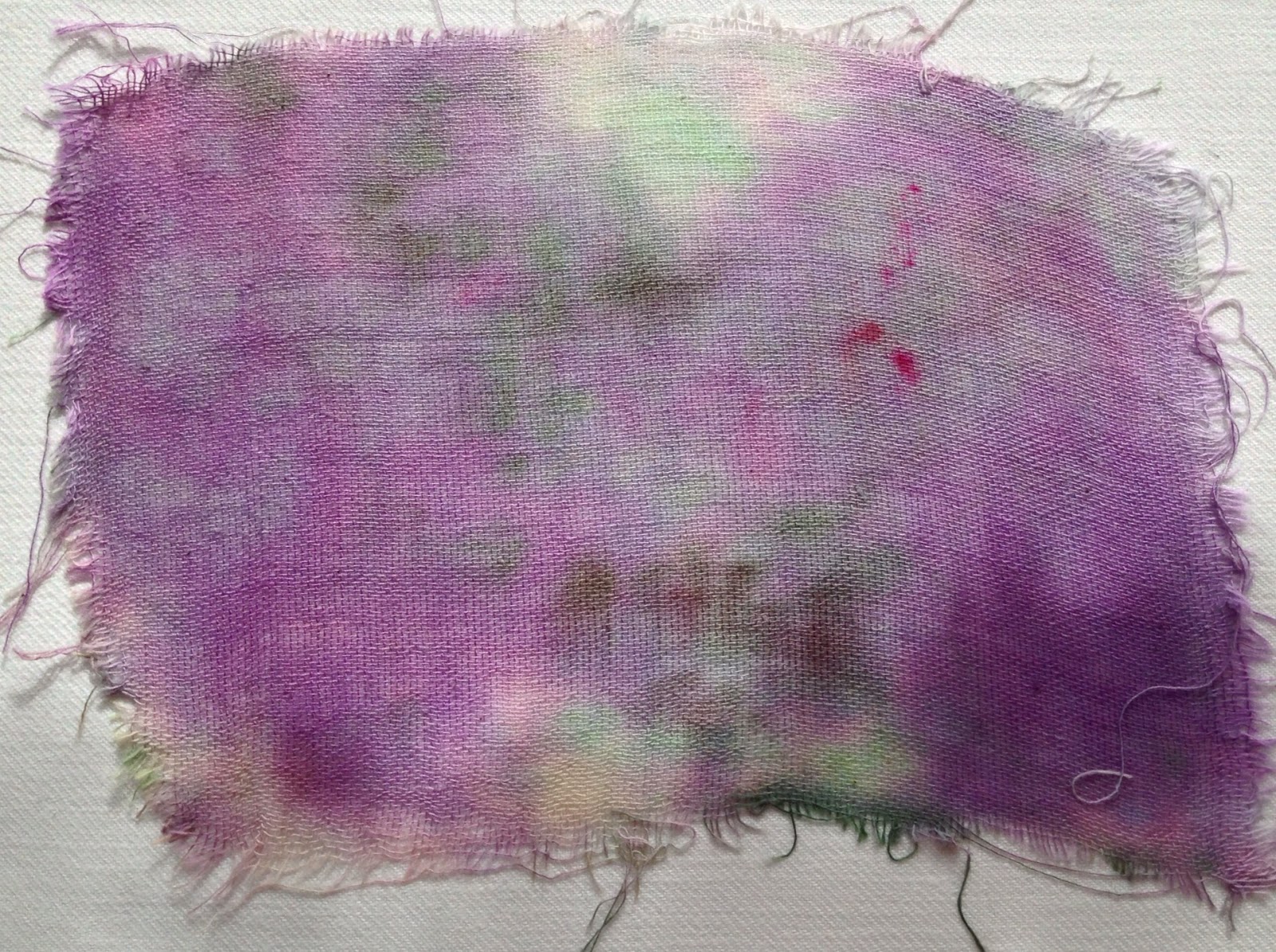The first step is to wash your fabric to remove any starch or manufacturer's dressing. Then you need to soak your fabric in a soda ash solution. This will ensure the dye is fixed, and makes the fabric washable. You need one cup of soda ash per gallon of water - I got the directions from an American website, but you can use google to find UK or European equivalent measurements.
While the fabric is soaking you can set up your dyeing station. You need a rack that you can arrange the fabric on and cover with ice cubes; and under the rack you need something that the melted ice & dye mixture can drain into. I found plastic garden riddles in a local branch of Yorkshire Trading. Some people use the cooling racks that you put cakes on. I placed my riddle over a washing up bowl. You can place fabric in the bottom of the tub that will catch the melted ice water, and get great effects.
Fabric to be dyed in the plastic riddle

Fabric covered with ice cubes.
When the fabric has been soaking for 30 minutes remove it from the soda ash solution, wring it out and place it on your chosen rack. Crumpling the fabric helps create the pattern. Then completely cover the fabric with ice cubes. For this project I used a 2Kg bag of ice. I had two long strips of 10" wide dry cotton in the basin, which had previously been treated with soda ash.
When the fabric has been soaking for 30 minutes remove it from the soda ash solution, wring it out and place it on your chosen rack. Crumpling the fabric helps create the pattern. Then completely cover the fabric with ice cubes. For this project I used a 2Kg bag of ice. I had two long strips of 10" wide dry cotton in the basin, which had previously been treated with soda ash.
Decide what colours you want to use, bearing colour theory in mind as the dyes will blend as the ice melts. For this project I used peach, magenta, and yellow Procion mx dye.
Sprinkle your chosen Procion dye randomly over the ice cubes. Wear a dust mask to avoid breathing in any dye powder as it is a hazardous substance. When you have sprinkled the dye powder on the ice, cover the whole thing with plastic. Leave for 24 hours, allowing all of the ice to melt. Once all the ice has melted you can rinse out the dye and wash the fabric as normal.
The fabric in the basin before being rinsed out and washed.
And some of the results:



























